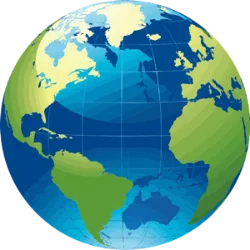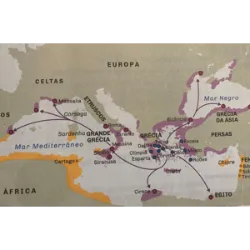Curiosities and Challenges about Academic
Do you like Academic?
Would you like to see more curiosities like these..
Hyperautomation is a technology based on process automation and artificial intelligence to improve the efficiency of....
Transitional fossils are a series of finds that help in understanding the evolution of certain animals. For example,..
Amidst one of Scotland's darkest histories, the Black Dinner took place in 1440, during the reign of James II. The....
So.. How about a Challenge on the Best Quiz Platform in the World?
Every page turned is another step towards success
Get to know a little about everything and bet on your knowledge in incredible challenges and duels..
Join the betspot.zone community, accumulate bts (bets) and even compete for prizes..
Discover some interesting facts about Academic..
history Quiz - history Curiosities - history Challenge - school Quiz - school Curiosities - school Challenge - languages Quiz - languages Curiosities - languages Challenge - mathematics Quiz - mathematics Curiosities - mathematics Challenge - physics Quiz - physics Curiosities - physics Challenge - chemistry Quiz - chemistry Curiosities - chemistry Challenge - geography Quiz - geography Curiosities - geography Challenge - - Frequently asked questions about Academic
The Revolution of April 25

The Revolution of April 25 , also known as the Carnation Revolution, was a historic event in Portugal, which took place on April 25, 1974, which overthrew the dictatorial regime of the Estado Novo, in force since 1933. Led by the Armed Forces Movement (MFA ), composed mainly of captains who had participated in the Colonial War, the movement enjoyed massive popular support. The military action resulted in few civilian casualties and led to the appointment of the National Salvation Board to govern the country. There followed a period of social and political unrest known as PREC (Revolutionary Process in Progress). On April 25, 1976, a new democratic Constitution came into force, marking the end of the authoritarian regime and the beginning of a democratic period in Portugal. The military coup was triggered by dissatisfaction with the colonial war, internal divisions within the regime and political repression.
celebrate in April 25
publicity
Education

Education Day, celebrated on April 28 , refers to the closing of the 2000 World Education Forum, in Dakar, Senegal. At this event, 164 countries committed to guaranteeing basic and secondary education for all children and young people by 2030. In addition to highlighting the relevance of education beyond the school environment, encompassing family and social values, this date is also marked by initiatives in several educational institutions to raise awareness in the community about the importance of learning in the education of children and adolescents.
celebrate in April 28
National Director

National Director 's Day is a celebration held in Canada and the United States on May 1 each year. This date recognizes and honors the work of school principals and vice-principals, highlighting their importance in educational leadership and student success. It is an opportunity to express gratitude for your commitment and dedication to providing a positive and productive learning environment for students, teachers, and school communities.
celebrate in May 1
Brazilian Literature

Brazilian Literature Day, on May 1 , celebrates the great writers and their works that shaped the diversity of the country's literary schools. In addition to honoring José de Alencar, recognized for his remarkable novels, the day highlights the importance of national literature, from the 16th century to contemporary movements. The date also coincides with National Children's Book Day, highlighting Monteiro Lobato's legacy in Brazilian children's literature.
celebrate in May 1
publicity
National Pau-Brazil

National Pau-Brazil Day, celebrated annually on May 3 , pays tribute to the tree that lends its name to the country. Recognized for its historical and economic importance, Pau-Brasil was one of the first natural resources explored by Portuguese colonizers after their arrival in Brazil in 1500, due to its high quality wood, used in the production of dyes for fabrics. Highlighting the need for preservation, awareness and protection of this species, which was almost extinct due to intense exploitation. Pau-Brasil has been protected by law since 1978, and its illegal exploitation is prohibited.
celebrate in May 3
October 15th

October 15th is Teachers ' Day in Brazil . This date is dedicated to honoring educators and recognizing the importance of the teacher's role in the education and development of students. The choice of this day refers to the creation of the first pedagogy course in Brazil, in 1939. Teachers play a fundamental role in education, transmitting knowledge, values and skills essential for the personal and social growth of students. They are responsible for inspiring and motivating their students, contributing to the formation of critical and conscious citizens.
celebrate in October 15
Some important events in Earth's history that created the co

Some important events in Earth's history that created the conditions for the emergence of life over thousands of years include: the formation of the planet with impacts from other bodies in the Solar System; the creation of a solid crust, with continents and oceans; the development of an atmosphere with a greenhouse effect; the movement of tectonic plates and volcanic activity; atmospheric electrical phenomena; the formation of simple organic molecules and macromolecules; the emergence of the first primitive cells; the beginning of photosynthesis and the production of oxygen; the creation of the ozone layer and superglaciations that gave rise to new environments.
publicity
Greece is located on the Balkan Peninsula and

Greece is located on the Balkan Peninsula and is washed by the Mediterranean Sea. Its civilization emerged from the 8th century BC, having its roots in mainland Greece, the islands of the Aegean Sea and the coasts of Asia Minor. It later expanded to the shores of the Mediterranean Sea, establishing colonies that contributed to economic and cultural links.
Egyptian civilization flourished in the northeast of the Afr

Egyptian civilization flourished in the northeast of the African continent along the banks of the Nile River, between the Arabian and Libyan deserts, from 3500 BC, lasting about 3000 years. Its development was driven by the fertility of the soil, enriched by the annual floods of the Nile. The Egyptians mastered engineering, building dikes and canals for irrigation during the dry season, as well as using the river as the main transportation and communication route for trade. Agriculture was the basis of the economy, cultivating wheat, barley, flax and other crops, while ranching, fishing and hunting. Crafts also prospered, including pottery, goldsmithing and metalworking. Agricultural surpluses boosted trade, with Egypt exporting wheat, pottery, and linen cloth, and importing raw materials such as wood, copper, and precious metals.
A first-degree equation

A first-degree equation is a polynomial equation whose highest degree is 1. It is expressed in the general form: ax + b = 0, where a and b are known constants, and x is the unknown variable. The solution of a first-degree equation is a specific value of x that makes the equality true. To solve the equation: Isolation of the term with the unknown: Transfer the term containing the variable to one side of the equation, so that it remains alone. All other terms carry over to the other side. Simplification of the equation: Perform the necessary mathematical operations to simplify the equation. Variable isolation: Divide both sides of the equation by the coefficient of x to isolate the variable. Solution of the equation: The value of x that makes the equality true is obtained, called the solution of the equation. A first-degree equation has a unique solution, unless it is an identity equation, where any value of x satisfies the equality.
publicity
A quadratic equation, or quadratic equation

A quadratic equation, or quadratic equation, is a polynomial equation with the highest degree equal to 2. It is represented in the general form: ax^2 + bx + c = 0, where a, b and c are constants and x is the variable unknown. There are three possible types of solutions for a quadratic equation: Two real and distinct roots: When the discriminant (∆) of the equation is greater than zero (∆ > 0), the equation has two different real roots. Two real and equal roots: When the discriminant is equal to zero (∆ = 0), the equation has two real roots that are equal, resulting in a unique solution.No real roots: When the discriminant is less than zero (∆ < 0 ), the equation has no real roots. In this case, the roots can be complex conjugate numbers.
Organic chemistry

Organic chemistry is the branch of chemistry that studies organic compounds, which contain carbon in their molecular structure. These compounds are present in nature and in synthetic products manufactured by humans. Organic chemistry focuses on the structure, properties, synthesis and reactivity of organic compounds. Structural formulas and functional groups are used to represent and identify the compounds. Topics covered include nomenclature, structure and properties, organic synthesis, reaction mechanisms and reactivity of functional groups. Organic chemistry is essential in many industrial sectors such as pharmaceuticals, polymers, food, energy and general chemicals. Its development contributes to society and science.
Chemical radioactivity

Chemical radioactivity is a phenomenon in which unstable atoms emit subatomic particles or electromagnetic radiation to achieve greater nuclear stability. There are three main types of radiation: alpha particles, beta particles and gamma radiation.Alpha (α) particles: These are helium nuclei composed of two protons and two neutrons. They have a positive charge and limited penetration. Beta particles (β): These are high energy electrons or positrons. They have a lower charge and mass than alpha particles and have a greater penetration capacity. Gamma radiation (γ): It is a form of electromagnetic radiation without charge and mass. It is highly energetic and has the greatest penetrating ability. Radioactivity occurs in unstable atoms known as radioactive isotopes, which are transformed into more stable isotopes through radioactive decay. Alpha decay (α), Beta decay (β) and Gamma radiation emission (γ).
publicity
Molar mass

Molar mass is a physical property that indicates the mass of a substance on a molecular scale. It is calculated by adding up the atomic masses of all the atoms present in a molecule or chemical formula. The unit of measurement for molar mass is grams per mole (g/mol). This unit indicates how many grams of a substance are present in 1 mole of that substance. For example, if the molar mass of a substance is 32 g/mol, that means that 1 mol of that substance weighs 32 grams. To calculate the molar mass of a substance, you need to know the atomic masses of the elements that make it up. The atomic mass of an element is found on the periodic table of elements. It represents the weighted average of the masses of the isotopes of that element.
Hyperautomation

Hyperautomation is a technology based on process automation and artificial intelligence to improve the efficiency of business operations. This technology can be used to reduce human errors, perform tasks that are tedious or difficult for humans, and speed up processes. Furthermore, Hyperautomation can also be used to enhance decision-making systems and improve communication between employees and systems. Hiperautomação offers efficient solutions for several applications, from manufacturing to healthcare. Companies can reduce IT operating costs by up to 30%, according to Gartner.
Transitional fossils

Transitional fossils are a series of finds that help in understanding the evolution of certain animals. For example, bird fossils show how a group of dinosaurs gradually acquired features such as hollow bones and feathers. Turtles are an example of an animal whose origin is enigmatic, but which can be understood by transitional fossils. The ancestor of turtles had broad ribs but lacked the shell that is so characteristic of this species. Pappochelys already had the belly ribs, the gastralia, which would serve to form the plastron. Odontochelys already had a plastron, but with teeth, a feature that does not exist in modern turtles. The carapace, which is the part of the shell that is on the back of turtles, appeared in Proganochelys, 214 million years ago. These findings show how species slowly evolve to become the ones we know.
publicity
Amidst one of Scotland's darkest histories

Amidst one of Scotland's darkest histories, the Black Dinner took place in 1440, during the reign of James II. The monarch, concerned about the conspiracy that had claimed the life of his predecessor, James I, invited 16-year-old William Douglas and his younger brother to a feast. Midway through dinner, a large black bull's head was placed on the table, signaling the Douglases' death warrant. Even against the king's wishes, both were beheaded, and this tragedy came to be known as the Black Dinner.
Amidst one of Scotland's darkest histories

Amidst one of Scotland's darkest histories, the Black Dinner took place in 1440, during the reign of James II. The monarch, concerned about the conspiracy that had claimed the life of his predecessor, James I, invited 16-year-old William Douglas and his younger brother to a feast. Midway through dinner, a large black bull's head was placed on the table, signaling the Douglases' death warrant. Even against the king's wishes, both were beheaded, and this tragedy came to be known as the Black Dinner.
Natural Sciences is short for Biology, Physics

Natural Sciences is short for Biology, Physics, Chemistry and Geography, and its main areas of study are natural history, fundamental laws of nature, structural analysis of the Earth and the forces that control the interaction between organisms. In this course, students examine and study the elements of nature around them, addressing the environment, the life cycle and interactions between living beings. Other subjects addressed include climate change, biodiversity, ecosystems and human influences on nature.
publicity
Reproduction

Reproduction is the function that allows the continuity of life and is common to all living beings. In humans, reproduction is sexual, as it is possible by the union of two sex cells: one female, the oocyte, and the other male, the sperm. When the human being is born, we can only identify the sex of the baby by observing its genitals. Thus, we call these organs primary sexual characters – the penis and the vagina. As we grow, our body undergoes changes in its external appearance – secondary sexual characteristics – which in adolescence already allow us to distinguish between girls and boys.
Adolescence begins with puberty - from 8 to 14 years old

Adolescence begins with puberty - from 8 to 14 years old, in girls, and from 9 to 15 years old, in boys. This is the phase in which not only major physical changes occur, but also psychological and even relational changes. In this phase, the "chemical messengers" - the hormones testosterone, in boys, and estrogen and progesterone, in girls -, which were inhibited in childhood, trigger the appearance of secondary sexual characteristics, giving human beings the physical traits they will have in adult life. Sometimes during adolescence, pimples appear on the face. This inflammation and obstruction of the pores of the skin, called acne, is caused by an increased production of sebum (fat) from the sebaceous glands of the skin, due to intense hormonal activity.
The natural landscape corresponds to the natural elements of

The natural landscape corresponds to the natural elements of the space, that is, which have not been modified by human action or which are not directly related to it. We can consider as examples of natural landscape the space of a forest, the area of a desert or even the area of a volcano. Everything that is not related to the naturalness of the environment ceases to characterize the natural landscape.
publicity
The humanized landscape

The humanized landscape is the result of human interference in nature. In it, nature can be absent or modified. These modifications may be the result of actions ranging from the construction of buildings to the destruction of habitats. humanized landscapes can also be called urban or cultural landscapes.
Planet Earth is made up of six major continents: America

Planet Earth is made up of six major continents: America, Africa, Europe, Asia, Oceania and Antarctica. These extensive portions of land are bathed by seas and oceans, including the continental shelf that extends into oceanic waters. Africa is located in the East, with part of its countries in the Southern Hemisphere, being the third largest continent in the world. On the other hand, America is the second largest continent and is all in the western region of the Earth. Asia, located in the Eastern Hemisphere and with most of its territory in the north, is the largest continent, both in terms of land area and population. Europe has 50 countries and is the second smallest continent. Oceania is in the Southern Western Hemisphere and is the smallest of all, yet the continent with the smallest population. Finally, Antarctica is a continent without inhabitants, located at the South Pole.
The Horoscope is an ancient practice

The Horoscope is an ancient practice, with records dating back to 7 BC. At that time, several ancient civilizations were already dedicated to observing the sky, believing that the stars could influence human life, especially the fate of newborns. This practice originated from the zodiac, which had its first record in 5 BC. The word is of Greek origin and means "circle of animals", referring to the celestial belt that marked the path of the Sun. Each constellation through which the star passed, symbolized a sign, phenomenon called ecliptic.
publicity
Carbon Dioxide (CO2) can solidify when cooled below -78 °C

Carbon Dioxide (CO2) can solidify when cooled below -78 °C, in this state it is known as dry ice. When heated to atmospheric pressure, it passes directly to the gaseous state, without passing through the liquid (sublimation). For CO2 to become liquid, a pressure greater than 5 atmospheres is required. When warm air is blown over dry ice, a dense white cloud forms at ground level, an effect often used in theaters. Its sublimation temperature is 194.7 K (-78.5 °C; -109.2 °F) at Earth's atmospheric pressure. However, its use must be done with caution, as direct contact with the extremely cold solid can cause frostbite. While generally not toxic, if released indoors it can lead to hypercapnia (abnormally high levels of carbon dioxide in the blood).
When we cut onions

When we cut onions, two cells present in them are released: one rich in sulphides and the other in enzymes. When these cells mix, a reaction occurs that produces an acid called sulfenic acid. This acid is transformed into gas and, when in contact with water, generates a weak solution of sulfuric acid. As the eyes are always wet, the solution formed causes irritation in the eyes, which causes tears. That's why we cry when we cut onions.
To neutralize the effects of a bottle of Coke

To neutralize the effects of a bottle of Coke, you need to drink 32 glasses of water. This drink contains about 10 teaspoons of sugar, which is 100% of the recommended daily intake. Phosphoric acid controls the taste of sugar. Ten to twenty minutes after eating, there is an increase in insulin production due to the spike in blood sugar. After 40 minutes, caffeine is fully absorbed, increasing blood pressure, dilating pupils and blocking adenosine receptors, causing insomnia. Five minutes later, dopamine stimulates the pleasure centers in the brain. After 60 minutes, the acids present in Coca-Cola react with nutrients, such as magnesium, zinc and calcium, in the large intestine, being eliminated in the urine, accompanied by water and sodium. Finally, enthusiasm gives way to tiredness and irritation due to lack of sugar.
publicity
Since the 3rd century BC

Since the 3rd century BC, the Portuguese language has evolved from Vulgar Latin brought by Roman settlers, with minor influences from other languages and a marked Celtic substrate. With the fall of the Roman Empire and the Germanic invasions, archaic Portuguese developed in the 5th century AD. and it became a language of written documents since the 9th century, giving rise to Galician-Portuguese. This language matured in the 13th century and was made official by D.Dinis I in 1290. The leap to modern Portuguese took place during the Renaissance, with the landmark Cancioneiro Geral by Garcia de Resende, in 1516. it began with the creation of grammars in 1536. With the expansion of the Age of Discovery, the Portuguese language became international. In 1990, the Orthographic Agreement of the Portuguese Language was signed, signed by representatives of Angola, Brazil, Cape Verde, Guinea-Bissau, Mozambique, Portugal and São Tomé and Príncipe, aiming to create a unified orthography.
The origin of the cedilla, comes from “cedilla”

The origin of the cedilla, comes from “cedilla”, from Spanish. Before, the cedilla was a small “z” that was placed under the “c” to show that the letter had the sound of “s”. That is, the small superscript “z” was later coupled to the “c”, transforming it into “ç”.
The longest word in our language

The longest word in our language is Pneumoultramicroscopicossilicovulcanoconiótico, with 46 letters! Very few people can, at first, read that word without making a mistake. It is related to a disease caused by inhaling volcanic ash, which attacks the lungs.
publicity
The English language has 26 letters that

The English language has 26 letters that are used to represent 44 sounds in 650 different ways. The letter “S” is the one that most starts words in English. “Strengths” is the word with only one vowel, while “Rhythm” is the longest word without a vowel. The two shortest sentences in English are “Go!” and “I am”. Words like “ewe” (sheep) and “you” (you) have the same pronunciation even though they don't have any letters in common. Likewise, “eye” and “I” are pronounced the same way. The word “set” has the most different meanings, around 450. Finally, “alphabet” is formed by the first two letters of the Greek alphabet: alpha and bēta.
All letters of the English alphabet

All letters of the English alphabet are included in the phrase “The quick brown fox jumps over the lazy dog”. Pangrams or pantograms are words or phrases that contain all the letters of the alphabet of a given language. pan", which means "all", and "grass", which means "letter".
There

There are some curiosities about words in English that deserve to be highlighted. The most common letter is the letter "e", with one in eight letters in English being "e". The "i" sound has seven spellings, and the next sentence contains all of them: "He believed Caesar could see people seizing the seas". Four non-rhyming words are "month", "orange", "silver" and "purple". The word "uncopyrightable" (non-authorial) has 15 letters and all different. "Underground" is the only word that starts and ends with "und". The word "bookkeeper" has three pairs of letters in a row: oo-kk-ee.
publicity
Malba Tahan's famous book, "The Man Who Counted"

Malba Tahan's famous book, "The Man Who Counted", describes a theory known as "four fours". This technique allows the formation of any integer between 0 and 100 using only four numerals 4 and mathematical operation signs. For example, to get a “3”, just perform the operation (4+4+4)/4.
The golden number

The golden number is a fascinating mathematical theory and one that is surrounded by myths. Represented by the Greek symbol Phi (f), this number, 1.6180, is the diagonal/side ratio of a regular pentagon and has been studied since antiquity. It indicates harmony, which is why it is present in works by Leonardo da Vinci, in constructions such as the Pyramids of Egypt and even in the size of human phalanges.
While many young people today

While many young people today are looking for fun in video games or sports activities, Evariste Galois opted for a different path: furthering his studies in Mathematics. Considered one of the most brilliant thinkers in the scientific field, Galois even challenged teachers and preferred books by renowned geniuses over classes. Although he left only 60 pages of notes, his legacy was considered fundamental for the development of Mathematics. Tragically, his life came to an untimely end, for in 1832 Galois defended honor in a tragic way: he took a pistol and died in a duel.
publicity
Back
